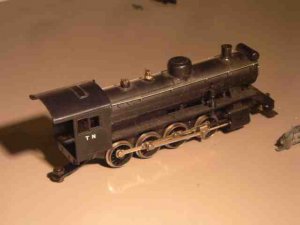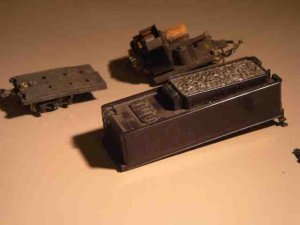I dug this out and photographed it today because I saw someone who might be able to use the tender body.
This comes from the early 60's. It was a Rivarossi 2-8-0. There's a motor in the tender powering the drivers through a split shaft.
I saw that Lionel sold one just like it.
The cast metal parts have self destructed. You can see the two parts of the tender frame; you may also be able to make out the frame for the front truck. I think the stuff is zamak or maybe white metal (is there a distinction?)
Anyway, I though someone might be interested.
This comes from the early 60's. It was a Rivarossi 2-8-0. There's a motor in the tender powering the drivers through a split shaft.
I saw that Lionel sold one just like it.
The cast metal parts have self destructed. You can see the two parts of the tender frame; you may also be able to make out the frame for the front truck. I think the stuff is zamak or maybe white metal (is there a distinction?)
Anyway, I though someone might be interested.



